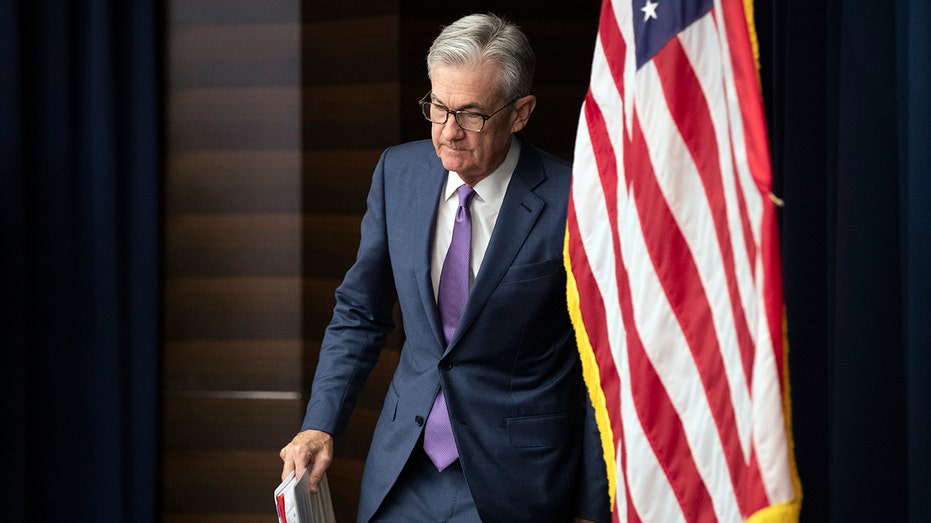Fed enters chaotic 2020 election year at odds with Trump
'The Fed has taken out its insurance policy, and at this point, wants to take it out for a spin'
The Federal Reserve is widely expected, at the conclusion of its eighth and final meeting of 2019 on Wednesday, to end the year the way it began it: pressing pause on interest rate movements, even with the looming complications of a presidential election and the U.S.-China trade war.
“Powell and others have strongly suggested the Fed would be on hold for a while,” David Berson, chief economist at Nationwide, told FOX Business. “They think the economy is in a good place.”
That decision, however, likely places the U.S. central bank at odds with President Trump, who’s hedging his 2020 reelection odds on a thriving economy. Trump has repeatedly lashed out at the Fed and its chairman, Jerome Powell, over the course of the year for raising interest rates too high, too quickly. More than once, he’s claimed the Dow Jones Industrial Average would be “10,000 points higher” if policymakers hadn’t voted to hike rates a year ago.
So far this year, the Fed has made three minor interest rate cuts, part of what Powell described as a “mid-cycle adjustment.” Instead of placating Trump, however, the cuts seemed to stoke his ire: In July, when officials cut rates for the first time in a decade, the president belittled the decision, saying “as usual, Powell let us down.”
GET FOX BUSINESS ON THE GO BY CLICKING HERE
And instead of cutting further next year, the Fed likely wants to see how cuts to the benchmark federal funds rate affect the economy, Josh Wright, iCIMS chief economist and a former Fed staffer, told FOX Business.
“The Fed has taken out its insurance policy, and at this point, wants to take it out for a spin,” Wright said.

Federal Reserve Chairman Jerome Powell walks to the podium during a news conference following a two-day Federal Open Market Committee meeting in Washington, Wednesday, July 31, 2019. (AP Photo/Manuel Balce Ceneta)
At the end of October, Powell told reporters he'd need to see a "really significant" rise in inflation above 2 percent before reversing course and returning to interest hikes. That was after the Fed’s most recent meeting, when policymakers voted to cut interest rates for the third time this year before pressing pause on future action.
Powell said as long as the economic outlook, including the strong labor market and solid consumer spending, remain unchanged, policymakers believe the current stance of monetary policy will remain appropriate. Interest rates are currently at a range between 1.5 percent and 1.75 percent.
WHERE ARE ALL OF THE JOBS? THESE SECTORS HIRED THE MOST IN NOVEMBER
Pricing in futures signals almost 0 percent chance of interest rate movement at the Fed’s Dec. 10-11 meeting. In fact, the Fed is mostly expected to continue its wait-and-see approach until at least June, though odds for another interest rate cut spike to 38.3 percent in September.
Given that the Fed voted in December 2018 to tighten monetary policy then essentially backtracked from that decision in July when it cut rates for the first time since the financial crisis, officials are likely hesitant to shift the benchmark lending rate, Berson said.
Doing so was a fairly remarkable policy shift for what is typically viewed as a slow-moving regulatory body, reversing years of slow-but-steady tightening. The Fed had not reduced interest rates since 2008 when it dropped rates to zero to cope with the fallout from the financial crisis. At the time, the GDP was at -0.1 percent, and unemployment was at 6 percent.
“They’re really going to want to be sure that the time is right to tighten, that they don’t have to reverse it soon,” Berson said.
CLICK HERE TO READ MORE ON FOX BUSINESS
According to a number of economists surveyed by Bloomberg, many expect the target range for the federal funds rate to stay put through the end of 2021.
“Despite a high level of noise, the Fed will remain above the political fray," said Scott Brown, chief economist at Raymond James Financial Inc.




















